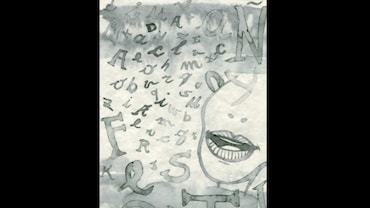Marriage of True Minds
We commemorate The Bard's 400th death anniversary with this iconic verse

SONNET 116
Let me not to the marriage of true minds
Admit impediments.
Love is not love
Which alters when it alteration finds,
Or bends with the remover to remove:
O no; it is an ever-fixed mark,
That looks on tempests, and is never shaken;
It is the star to every wandering bark,
Whose worth's unknown, although his height be taken.
Love's not Time's fool, though rosy lips and cheeks
Within his bending sickle's compass come;
Love alters not with his brief hours and weeks,
But bears it out even to the edge of doom.
If this be error, and upon me prov'd,
I never writ, nor no man ever lov'd.
ABOUT THIS SONNET (By Shormishtha Panja)
SINCE THIS SONNET is seen amongst the most abiding expressions of true love, it would come as a surprise, then, that it was addressed to a young man, rather than Shakespeare's lady love. It is a part of the series of sonnets that Shakespeare wrote to Mr W.H., "the onlie begetter" of the sonnets, as the dedication puts it. Critics believe W.H. is either Henry Wriothesley, Earl of Southampton or William Herbert, Earl of Pembroke.
It seems W.H. may have been Shakespeare's patron and viewed by the Bard as his social superior. For the Elizabethan sonneteers, love was not merely love, as Arthur Marotti puts it, but linked to social prestige and patronage. For Shakespeare, the provincial young man from Warwickshire, trying to make his fortune in London in the not-so-respectable profession of the theatre, a patron among the nobility would have been vital.
Shakespeare's sonnets are surprisingly autobiographical for a man who seldom revealed himself in his plays. They are replete with contrary currents of self-abnegation and self-proclamation, of faith in the strength of love, along with a lasting impression of its weakness. Sonnet 116 is no exception.
The beautiful image in the lines, "Love's not Time's fool…" brings alive Father Time's scythe. It seems like it encircles, as if in an embrace, before chopping off the signs of youth-rosy lips and cheeks. And like so many fragile spring blooms, these are said to be gathered only to be cut off by the mower.
Shakespeare often uses words in more senses than one. We see dark undertones in an otherwise strong proclamation of the steadfastness of love. The sonnet also throws up the usual tropes of Petrarchism (the Italian Renaissance poet Petrarch being the father of the sonnet)-the comparison of the lover to a "bark" or ship lost at sea. We have the legal language of the opening lines and the clever couplets that close every Shakespearean sonnet and which often seem to bring an abrupt and artificial sense of closure.
Shormishtha Panja is a professor of English and Director, Institute of Lifelong Learning, University of Delhi. She has recently edited the books Shakespeare and Class and Shakespeare and the Art of Lying. She has been the President of the Shakespeare Society of India.






